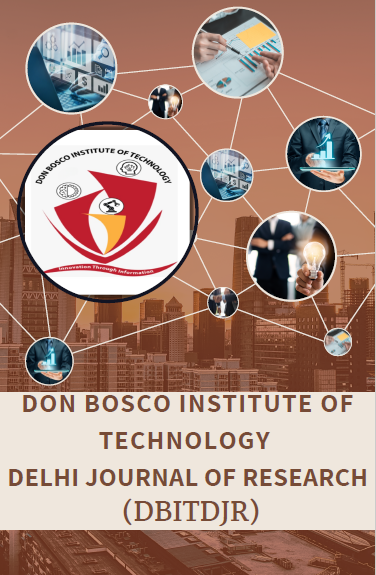Cloud Computing: Redefining Data Management and IT Services in the Digital Age
DOI:
https://doi.org/10.48165/dbitdjr.2025.2.01.02Keywords:
Cloud Computing, Data Management, IT ServicesAbstract
This paper delves into cloud computing, a transformative technology reshaping data management, storage, and IT services. The study explores the fundamentals, growth, and impact of cloud computing, addressing its advantages and challenges, with a focus on security, scalability, and cost-efficiency. Through a comprehensive literature review, this research investigates existing studies, methods, and findings on cloud adoption across industries. The paper analyses data from industry reports and surveys, providing insights into cloud adoption trends and user experiences. The conclusion underscores the potential and challenges of cloud computing, suggesting directions for future research.
References
Armbrust, M., et al. (2010). A View of Cloud Computing. Communications of the ACM, 53(4), 50-58.
Baliga, J., et al. (2011). Green Cloud Computing: Balancing Energy in Processing, Storage, and Transport. Proceedings of the IEEE, 99(1), 149-167.
Botta, A., et al. (2016). Integration of Cloud computing and Internet of Things: A survey. Future Generation Computer Systems, 56, 684-700.
Buyya, R., et al. (2009). Cloud computing and emerging IT platforms: Vision, hype, and reality for delivering computing as the 5th utility. Future Generation Computer Systems, 25(6), 599-616.
Carroll, M., & Van Der Merwe, A. (2020). Impact of Cloud Computing on Business Continuity during COVID-19. Journal of Digital Innovation, 3(2), 28-35.
Dillon, T., Wu, C., & Chang, E. (2010). Cloud Computing: Issues and Challenges. 2010 24th IEEE International Conference on Advanced Information Networking and Applications.
Dinh, H. T., et al. (2013). A survey of mobile cloud computing: Architecture, applications, and approaches. Wireless Communications and Mobile Computing, 13(18), 1587-1611. Gartner. (2021). Cloud Adoption Trends Report. Gartner Research.
Hashem, I. A. T., et al. (2015). The rise of “big data” on cloud computing: Review and open research issues. Information Systems, 47, 98-115.
Hashizume, K., et al. (2022). Adopting Zero Trust Architecture for Enhanced Cloud Security. International Journal of Security and Networks, 18(1), 52-68.
Jaeger, P. T., et al. (2009). Cloud Computing and Information Policy: Computing in a Policy Cloud? Journal of Information Technology & Politics, 5(3), 269-283.
Marston, S., et al. (2011). Cloud Computing—The Business Perspective. Decision Support Systems, 51(1), 176-189. Mell, P., & Grance, T. (2011). The NIST Definition of Cloud Computing. NIST Special Publication 800-145.
RightScale. (2019). 2019 State of the Cloud Report. RightScale Inc. Rodrigues, J. J., et al. (2020). The future of Cloud computing: IoT, big data, and machine learning. Internet of Things, 1(1), 23-39.
Shi, W., et al. (2016). Edge computing: Vision and challenges. IEEE Internet of Things Journal, 3(5), 637-646.
Sultan, N. (2010). Cloud Computing for Education: A New Dawn? International Journal of Information Management, 30(2), 109-116.
Takabi, H., Joshi, J. B. D., & Ahn, G. J. (2010). Security and Privacy Challenges in Cloud Computing Environments. IEEE Security & Privacy, 8(6), 24-31.
Vaquero, L. M., & Kanda, K. (2021). The Rise of Hybrid and Multi Cloud Environments for Business Agility. Journal of Cloud Computing, 9(4), 213-225.
Velte, T., Velte, A., & Elsenpeter, R. (2010). Cloud Computing: A Practical Approach. McGraw-Hill.
Zhang, Y., & Wang, X. (2023). Cloud Computing and AI: Driving Innovation in Big Data Analytics. Journal of Big Data, 10(1), 105-123.




